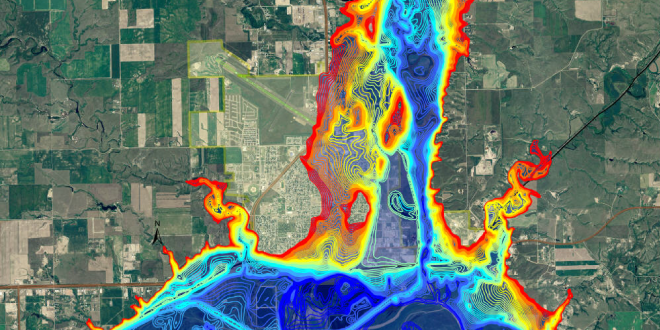NASA’s Applied Remote Sensing Training Program (ARSET) will provide an 2 online webinar series from July 25 – August 16. Starting with an insightful guide to Monitoring Urban Floods Using Remote Sensing, this training will highlight the unique methods and considerations needed to monitor flooding in an urban setting.
The follow on series, Advanced Webinar: Radar Remote Sensing for Land, Water, & Disaster Applications will demonstrate to participants the increased utility of radar in disaster management. Radar is increasingly becoming more open and available and is a game changer when it comes to flooding due to its ability to “see” through clouds.

Urban flooding is already a major risk for cities. Increasing impervious surface area, inadequate storm water drainage, and aging infrastructure all contribute. As a result, growing urban populations will face a greater risk of flooding from extreme weather events. This first webinar series, Monitoring Urban Floods Using Remote Sensing, begins July 25th and will focus on the components of urban flooding that satellite data can track extreme precipitation, flooding, and waterlogged and ponded surfaces. Using satellite data allows individuals and organizations to develop better plans for handling floods. This can include developing better early warning techniques, better plans for rescue and relief, and more effective long-term infrastructure planning. By the end of the training, attendees will be able to describe remote sensing and Earth system model data useful for flood monitoring in urban areas and identify how remote sensing can aid in planning early warning systems, flood response, and flood recovery efforts. This training is primarily intended for urban water and disaster managers, urban planners, emergency responders, transportation and utility providers and planners, public health professionals, and the insurance sector.
Beginning the week following the Urban Flooding training, we will dive deeper into the the use of radar and SAR for disasters management. A limitation of optical satellite remote sensing is that it depends on cloudless, well-illuminated areas to produce quality data. This is especially problematic for collecting data during nighttime or when there is cloud cover. Radar is an ideal sensor to study the surface of the Earth because of its ability to “see” through clouds regardless of day or night conditions. In addition, the radar signal can penetrate through the vegetation canopy and provide information about conditions underneath, such as flooding. Techniques such as interferometry can track surface deformation on the order centimeters, such as ground movement caused by earthquakes.
This webinar series builds on ARSET’s previous webinar: Introduction to Synthetic Aperture Radar. The training will focus on different radar approaches and techniques including amplitude, time-series, polarimetry, and interferometry for mapping and monitoring disasters and land cover. Attendees will apply these techniques to map land cover and land use change, deforestation, flooding, crop monitoring, and surface deformation for earthquake monitoring.
The series, Advanced Webinar: Radar Remote Sensing for Land, Water, & Disaster Applications will be broadcast in Spanish (10:00-12:00 EDT, UTC-4) and English.